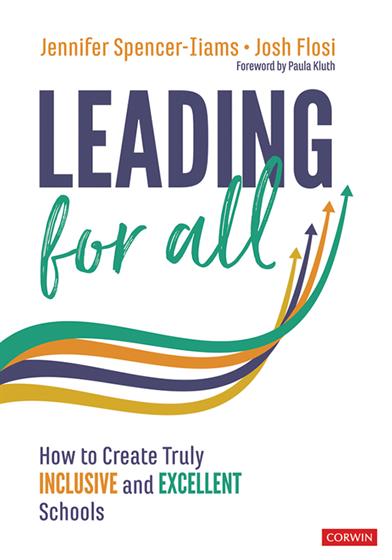Foreword by Paula Kluth
Acknowledgments
About the Authors
Introduction
Chapter 1 - Finding Our Why
Why Inclusion?
Academic Research Supports Inclusion
Inclusion and the Whole-Child Movement
Equity and Social Justice
The Perspective of Families
Moving from Why to Why Not?
References
Chapter 2 - What We Mean by Inclusive Education
A Continuum of Inclusive Practices
A Summary of Changes Over the Past Eight Years
What Inclusion Looks Like
References
Chapter 3 - The Foundations of Inclusive Education
Putting Our Goals on Paper
Guiding Principles for Our Work
Kortney’s Story
References
Chapter 4 - Creating Inclusive Cultures
True Friendships
Providing Supports in the General Education Classroom
Shared Ownership and Co-Teaching
The Power of Language
All Students Participate in Cocurricular Activities
References
Chapter 5 - Improving Instructional Practices
Frameworks that Guide our Instructional Practices
Learning Targets
Engagement Strategies
Access to Grade-Level Content
Common and Consistent Data
Analyzing Data to Inform Instruction
Purpose of Evaluation
References
Chapter 6 - The Components of Inclusive and Equitable Learning Communities
Effective Physical Spaces
Teaching Common Expectations
Rituals, Routines, and Recognition
Engagement Strategies for All Students
Teaching Social-Emotional Skills
Restorative Practices
Relationships with High Expectations
References
Chapter 7 - Increasing Student Voice
Growth Mindset Revisited
Student Voice and Behavior
Augmentative and Alternative Communication
Students as Leaders of Change
Students and Their IEPs
References
Chapter 8 - Supporting Behavior in Inclusive Schools
All-Some-Few Thinking
Team “Student”
The Intensive Capacity-Building Team
Thinking Inclusively About Outside Placement
References
Chapter 9 - Leadership Moves to Make it Happen
Communication and Relationships
The Role of the Central Office
Salary Structures, Job Descriptions, and Union Contracts to Support Inclusive Practices
Structures for Professional Learning that Support Inclusive Practices
Structures for Leadership and Stakeholder Input
Partnerships with Other Districts and Outside Organizations
Closing Thoughts about Leadership Moves
References
Chapter 10 - What’s Next?
Transportation
Inclusive Early-Childhood Education
Adult Transition Services and Inclusive College Opportunities
Inclusive Teacher Education
The Mental Health System
Inclusive Practices in the Time of Distance Learning and COVID-19
Closing Thoughts
References
Index




